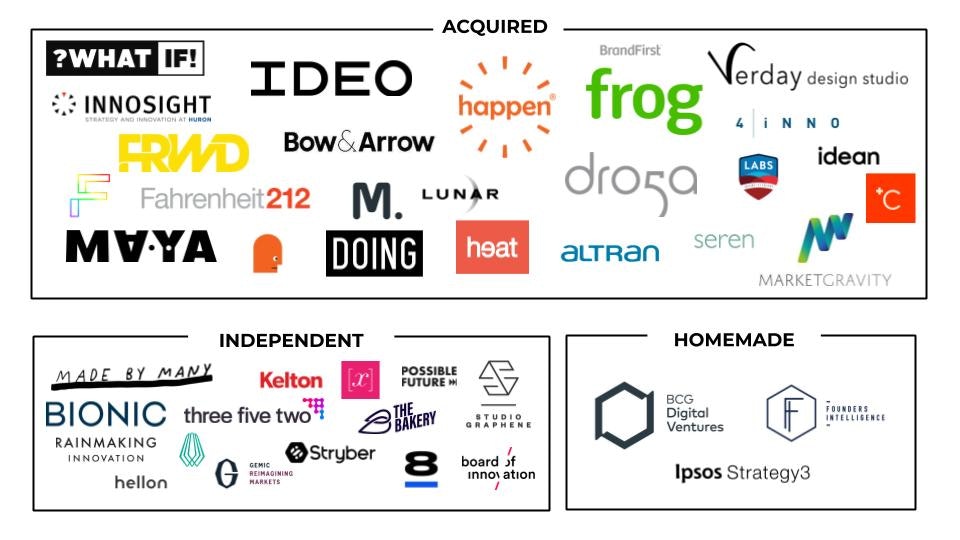Forget accelerator programmes and corporate venture funds — corporate venture building is the best way for big companies to innovate, says Felix Staeritz at FoundersLane, the Berlin-based company that works with a number of the world’s biggest companies to help them build their own startups.
Corporate venture building is more involved than just investing in a minority share via a CVC fund — companies tend to own a majority stake in the startups — but more at arm’s length than a corporate innovation lab.
Not only does it make better use of a corporate innovation budget, but Staeritz believes it could help save the world. Yes, really.
Actually Staeritz has a bit of “saving the world” experience — one of his early projects was creating the ShareTheMeal donation app for the UN World Food Programme. Working with a multinational agency is all of the bureaucracy and paperwork of corporate innovation but on steroids admits Staeritz, but if it works you can have a big impact.
Since then he’s been working with businesses like Allianz, Vattenfall and Baloise to help them create their own venture building programmes.
Sifted asked Staeritz why he has become such a strong advocate for this approach.
Why venture building? What’s wrong with accelerators and innovation labs?
It is not that I am saying you shouldn’t run an accelerator program or an innovation lab. But you need to understand why you do it. Labs are for very early-stage experiments. They can work well, but then companies struggle to turn them into big businesses.
There is only one unicorn that I can think of that has come out of a corporate accelerator — N26, which was in the Axel Springer Plug and Play Accelerator. Most companies are spending all this money on labs with no results.
Why do companies struggle to scale up their lab or accelerator companies?
Innovation labs or corporate accelerators aren't inherently bad. For example, corporates bring a wealth of assets, resources and a considerable network to the table, all of which can help fuel innovation.
But labs and accelerators also have some major flaws. There is often a significant lack of board involvement. You simply cannot outsource the creation of a strategically-relevant new digital business. You have to get involved.
Equally, the environment the labs and accelerators create is often too restrictive and, as a result, doesn't attract the top talent needed to make these ventures a success. It is important that corporates put the right structures, processes and assets in place that allow them to create successful and sustainable digital businesses — and they need to do so fast
Companies can also be unwilling to make big bets on something that comes out of an accelerator or a lab. If an executive makes the wrong call, it costs them their job, which makes everyone really cautious.
OK, so what about corporate venture investing?
It is a bit like VC investing, and VCs typically like fast-growing companies — startups in the consumer space that are relatively cheap to build and can scale fast.
The ideal area for corporates to get involved is in solutions for the climate crisis and the healthcare crisis. These are complex problems in highly regulated industries, where it is slower to build startups. Being able to take a longer-term view than a VC is an advantage.
But just investing money isn’t enough. To have an impact in these areas startups need collaboration with corporations that already have huge existing assets in this area. If you want to create a startup that optimises solar panels, you need to collaborate with big utility companies that already own big solar parks. Doing it from scratch as a founder takes forever.
Corporate venture capital alone doesn’t help because they don’t put the assets into the business. Acquisitions don’t help because you can’t acquire what doesn’t exist. Often you need to create these new businesses from scratch.
Who is doing this well at the moment?
Ping An's model shows that it is possible — they have created more than $100bn in corporate venture building. Vattenfall is the example to look to in Europe. They have created success in more than 42 countries.
So what is the secret to doing venture building like Ping An or Vattenfall?
Here are a few key success factors to put in place.
- Create the new venture on an arm’s length basis.
- Make sure you can create shares for founders, so you can hire people from outside the corporation.
- Make sure that venture building is a C-level topic. Top-level management has to take responsibility for the project.
- Think long term. Peg people’s bonuses to how much value they have created in new businesses or how much they moved the company forward on sustainability goals.
- The right governance structure. You can’t be dependent on just one C-level champion. It has to be structured like a CVC fund, building 10 modules in 10 years.
- Make sure you have clear KPIs to help validate if the project is successful. You have to look at things like customer acquisition costs and growth rates.
How much should you spend on a venture building programme?
10% of your budget is a good rule of thumb. It may be too little in some industries, however. Car manufacturers, for example, are dealing with so many new technologies right now, from AI to self-driving cars to hydrogen batteries, they may need a bigger budget.
But this can be spent in increments, with new funding released as the model is validated. You shouldn’t run 40 experiments at the same time — you won’t get the quality. Run two to three at a time to test.


